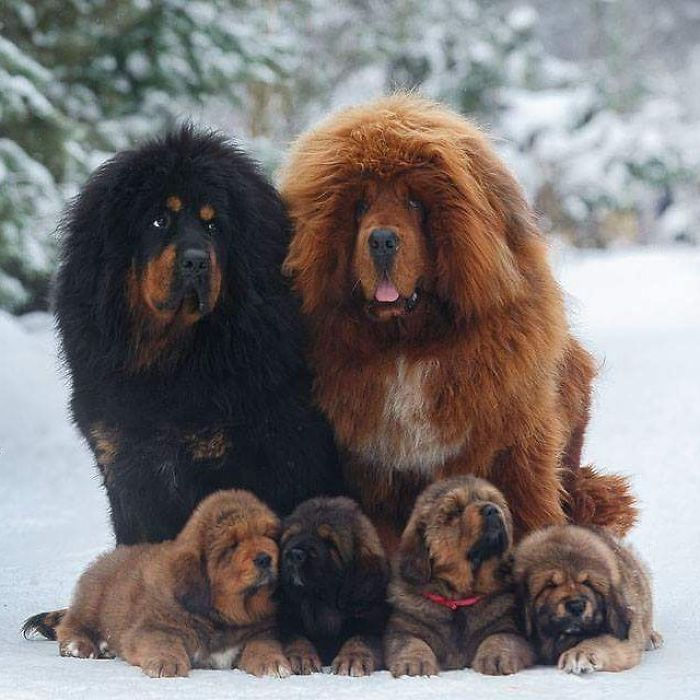Dog / Detail
A Canine Chronicle: Dogs of the Tibetan Plateau
Jonathan Bennet | 27 September 2024 | 18:05
The Tibetan Plateau, often referred to as the "Roof of the World," is a harsh and unforgiving environment. Yet, amidst this austere landscape, one finds a remarkable companion: the Tibetan dog.
For centuries, these canines have played an integral role in the lives of the Tibetan people, serving as herders, protectors, and cherished companions.
The Tibetan dog is a remarkable creature, adapted to one of the most challenging environments on Earth. For centuries, these canines have played a vital role in the lives of the Tibetan people, serving as companions, protectors, and spiritual symbols.
As we look to the future, it is imperative that we continue to appreciate and protect the rich heritage of Tibetan dogs and their unique place in the world.
This article delves into the fascinating world of Tibetan dogs, exploring their unique breeds, historical significance, and the challenges they face in their high-altitude homes.

The Tibetan Mastiff: The Himalayan Giant
One of the most iconic and recognizable Tibetan dog breeds is the Tibetan Mastiff. Known for their immense size and imposing appearance, Tibetan Mastiffs have been prized by Tibetan nobles and monasteries for centuries.

These dogs were originally bred to protect livestock and guard against predators, such as wolves and bears. Their thick, double coats provide insulation against the harsh Tibetan winters, while their powerful build and intimidating demeanor deter potential threats.
The Tibetan Terrier: The Gentle Shepherd
In contrast to the formidable Tibetan Mastiff, the Tibetan Terrier is a smaller, more gentle breed. Historically, Tibetan Terriers were used as herding dogs for yaks and sheep, as well as companions for Tibetan monks.

These dogs are renowned for their intelligence, loyalty, and affectionate nature. Their long, flowing coats are often adorned with colorful beads and amulets, reflecting their cultural significance.
The Lhasa Apso: The Lion Dog
Another popular Tibetan dog breed is the Lhasa Apso. This small, sturdy canine is known for its long, flowing coat and distinctive facial features. The Lhasa Apso was originally bred as a guard dog for Tibetan monasteries, and its name translates to "lion dog" in Tibetan.

These dogs are known for their independent and alert personalities, making them excellent watchdogs.
Crossbreeds and Their Significance
While purebred Tibetan dogs are widely recognized, crossbreeds also play an important role in the region. Many Tibetan dogs are mixed with other breeds, such as the Himalayan Shepherd Dog or the Dingo.

These crossbreeds often possess a combination of traits from their parent breeds, making them well-suited to the challenging Tibetan environment.
The Importance of Dogs in Tibetan Culture
Dogs have a deep-rooted cultural significance in Tibet. They are often seen as spiritual beings and are believed to protect their owners from harm.

Tibetan Buddhists often view dogs as sacred animals and may even include them in their religious ceremonies. The bond between Tibetans and their dogs is strong and enduring, reflecting the mutual respect and affection that exists between humans and animals in this unique region.
Challenges Faced by Tibetan Dogs
Despite their resilience, Tibetan dogs face a number of challenges in their high-altitude homes. The extreme cold, harsh weather conditions, and limited access to veterinary care can pose significant risks to their health and well-being.
Additionally, the increasing popularity of Tibetan dog breeds has led to concerns about overbreeding and the exploitation of these animals for profit.

Conservation Efforts and the Future of Tibetan Dogs
To address these challenges, conservation organizations and individuals are working to protect Tibetan dogs and their habitats. Efforts include promoting responsible breeding practices, providing veterinary care, and raising awareness about the importance of preserving these unique canine breeds.
As the world continues to change, it is essential to ensure that the future of Tibetan dogs remains bright and prosperous.
Related
-

The Healing Power of Dogs: How Canine Therapy is Revolutionizing Mental Health and Boosting Positive Energy in Humans
Dog14 November 2024
-

A Pawsitive History: Dogs of Nuremberg
Dog09 November 2024
-

The Role of Oxytocin in the Human-Dog Bond: The Science Behind Our Deep Connection
Dog06 November 2024
-

Beyond the Beach: Jamaica's Dog Lovers
Dog29 October 2024
-

A Dog's Delights: Homemade Snacks for Our Furry Babies, Recipes Included!
Dog29 October 2024
-

A Dog's Disorientation: Understanding Your Dogs' Wanderlust
Dog29 October 2024
Popular
-

-

A Pawsitive History: Dogs of Nuremberg
09 November 2024 -

-

Beyond the Beach: Jamaica's Dog Lovers
29 October 2024 -
